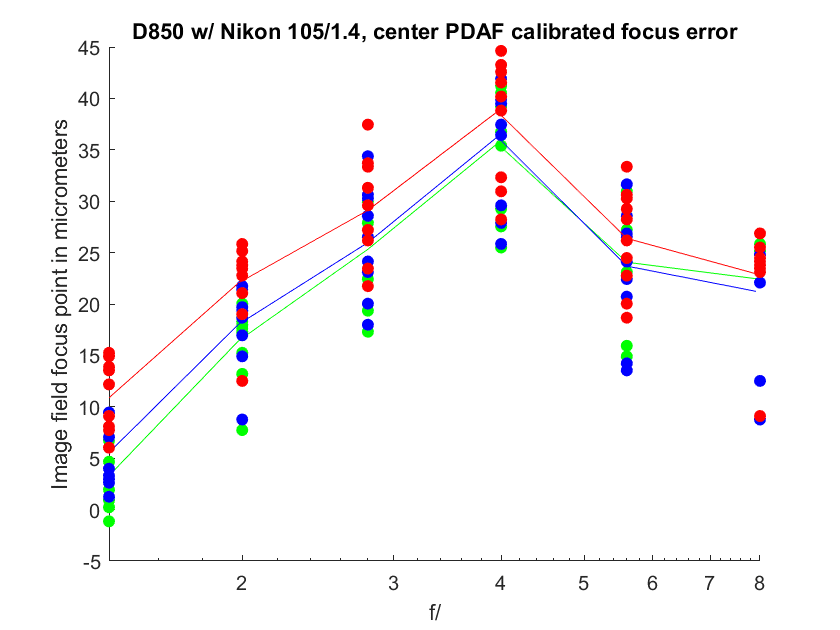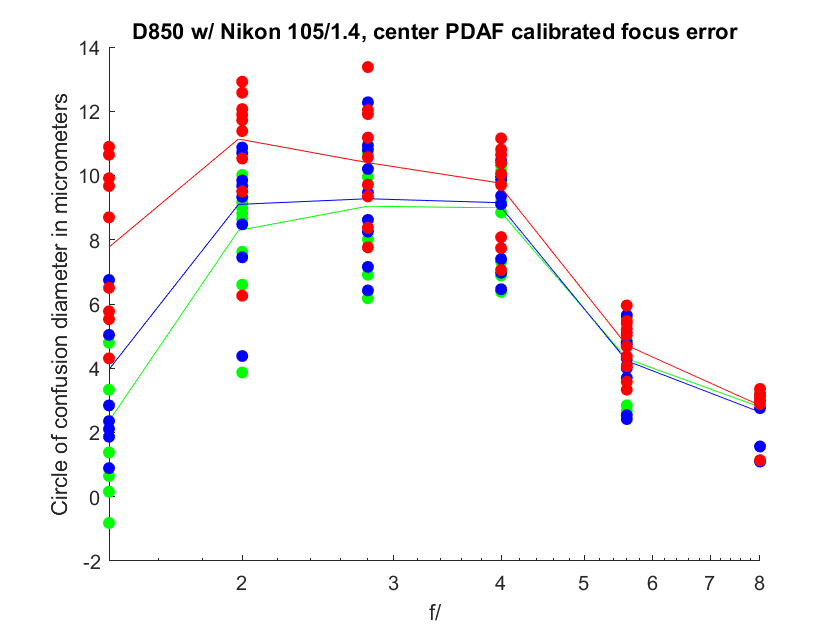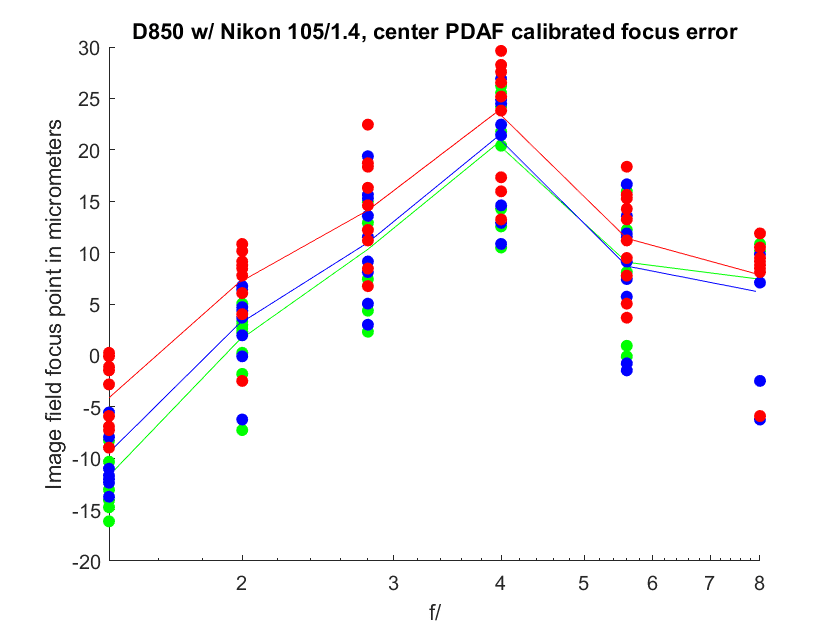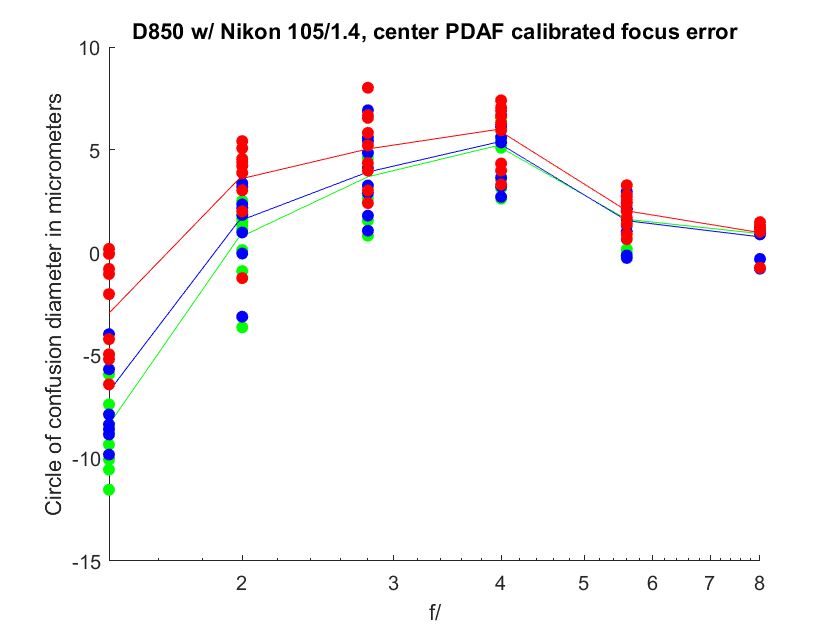This is a continuation of a series of posts on the Nikon D850. The series starts here. You should be able to find all the posts about that camera in the Category List on the right sidebar, below the Articles widget. There’s a drop-down menu there that you can use to get to all the posts in this series; just look for “D850”.
In the previous post, I talked about strategies for tuning the AF adjustment of the Sigma Srt 85/1.4 in the presence of some considerable focus shift. Now I’ll turn my attention back to the Nikon 105 mm f/1.4E, which also suffers from focus shift.
In the center, here’s what the focus error in the image field looks like for a run of 10 exposures each at the whole-stop apertures between f/1.4 and f/8 for a target distance of 3.16 meters:
Front-focus is represented by negative values on the vertical axis. It appears that this lens is back-focusing slightly wide open, and more as you stop down. I’ve plotted all three Adobe RGB color planes so that you can see how much longitudinal chromatic aberration (LoCA) there is compared to the focusing error.
Now we’ll look at the size of the circles of confusion implied by the above data:
Eyeballing the above, my take was that cranking in -15 micrometers of AF adjustment should be a good compromise. Here’s what that looked like in the image plane:
And the circle of confusion view:
This is pretty good. We are on average about 1.5 pixels worth of CoC front-focused wide open, and the worst narrower f-stop, f/4, is about 5 um back-focused.




Leave a Reply